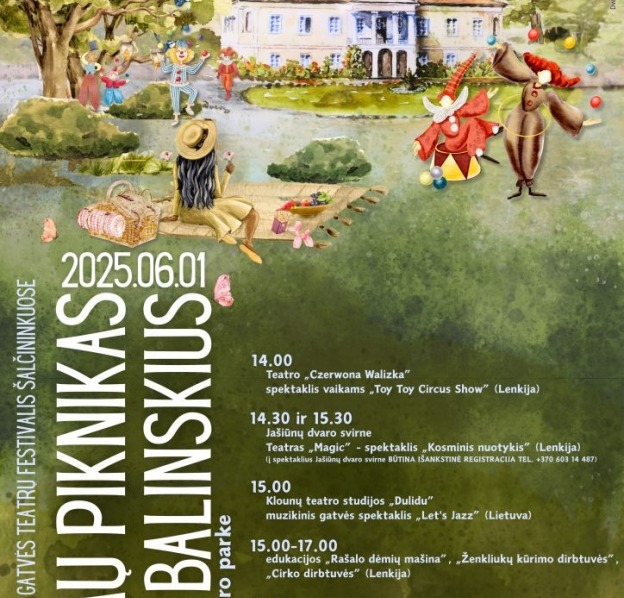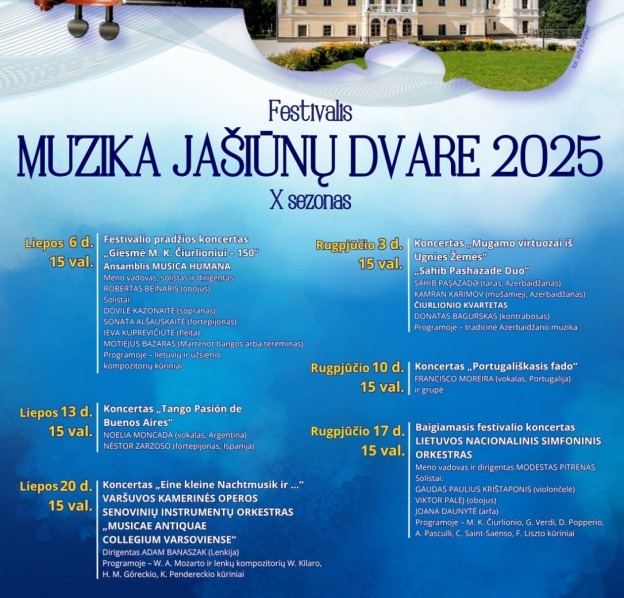Jašiūnai Manor
- Home
- Castles and Manors
- Jašiūnai Manor
To the east of the manor house there is the parterre, beside which on the northern side there is the general storeroom and the barn on the south. Beside the barn there is the stud farm and further to the southeast up the hill – the blacksmith shop with coach house. A bit far away from the manor house cowsheds were built and farmhand quarters – across the byway. On the opposite bank of the river, in the bottom of a woodland there is cemetery of the manor.
The larger part of the manor territory is occupied by the park. The park boasts expressive compositions of plantations, impressive soft lines of trees, slender winding paths. More than half of the park territory is grown with lawn. The park has about 30 species of coniferous and deciduous trees.
Two-storey oblong rectangular manor house with the hip roof which can be seen from the bottom of the river has an imposing size and ornamental forms in the entire neighbourhood. Premises on both floors are laid out symmetrically, in an enfilade order, connecting with each other and through the corridor. The broad central staircase lead from the lobby to the first floor of the manor house. The forms of the exterior of the manor house were built in late Classicism style.
The central façade is of exceptionally original composition. Jašiūnai manor house was designed by architect Karolis Podčašinskis. Following the Empire style, Podčašinskis lifted the portico of four Doric columns to the first floor above the porch of three open arches. In the façade overlooking the park the portico was replaced by a balcony and coupled pilasters. The corners of the manor house are adorned with niches with pilasters on the corners. The flat surface of the façades is animated by the architraves.
The interior of the manor house is rather decorative: most of the premises are with mirror arches. In niches of the spacious stairwell there used to be sculptures, above the doors there were wood carvings. The rooms on the first floor were decorated with mouldings with plant motifs, moderately gold-plated plafonds, reveals and friezes. Jašiūnai manor house already witnesses some influence of Empire and Romanticism and is one of the most original architectural monuments from late Classicism in Lithuania. At the same time as the manor house, the part of the general storeroom – one-storey house with almost symmetrical premises laid out in two rows – was built.












